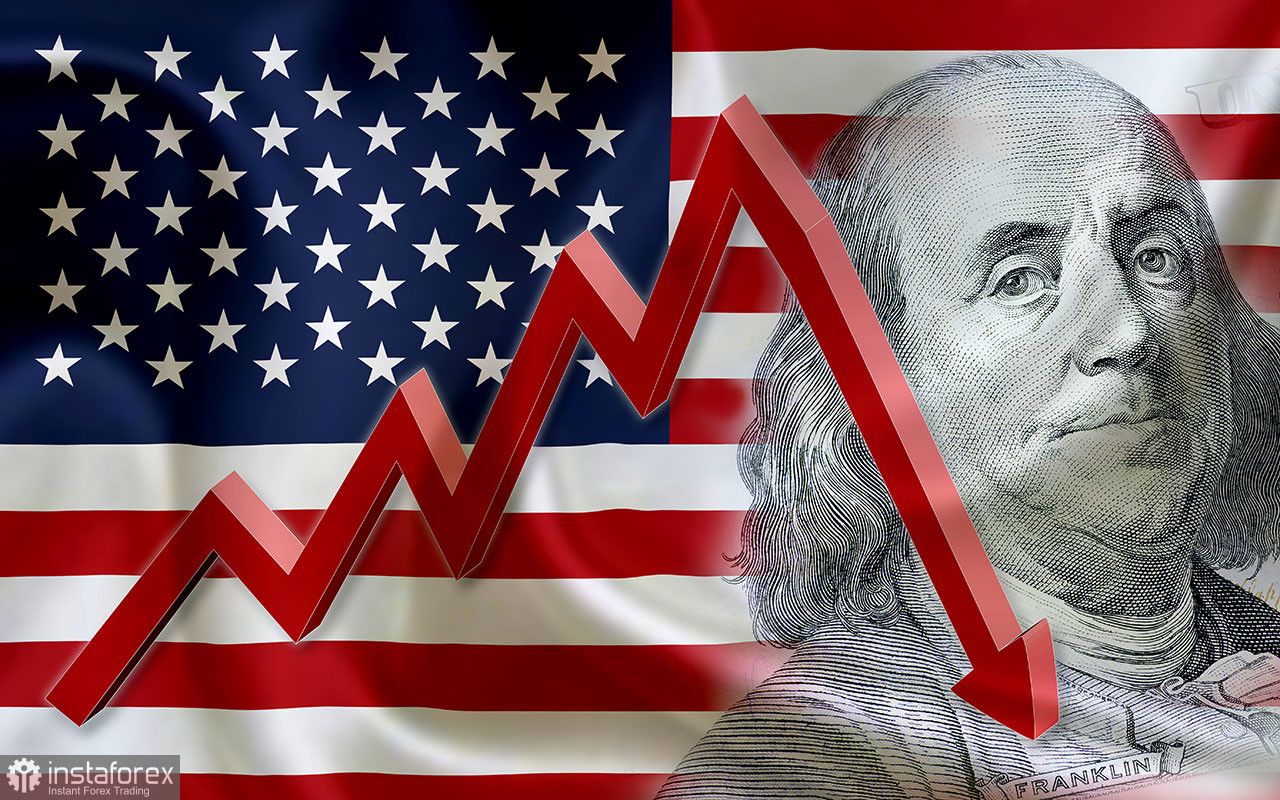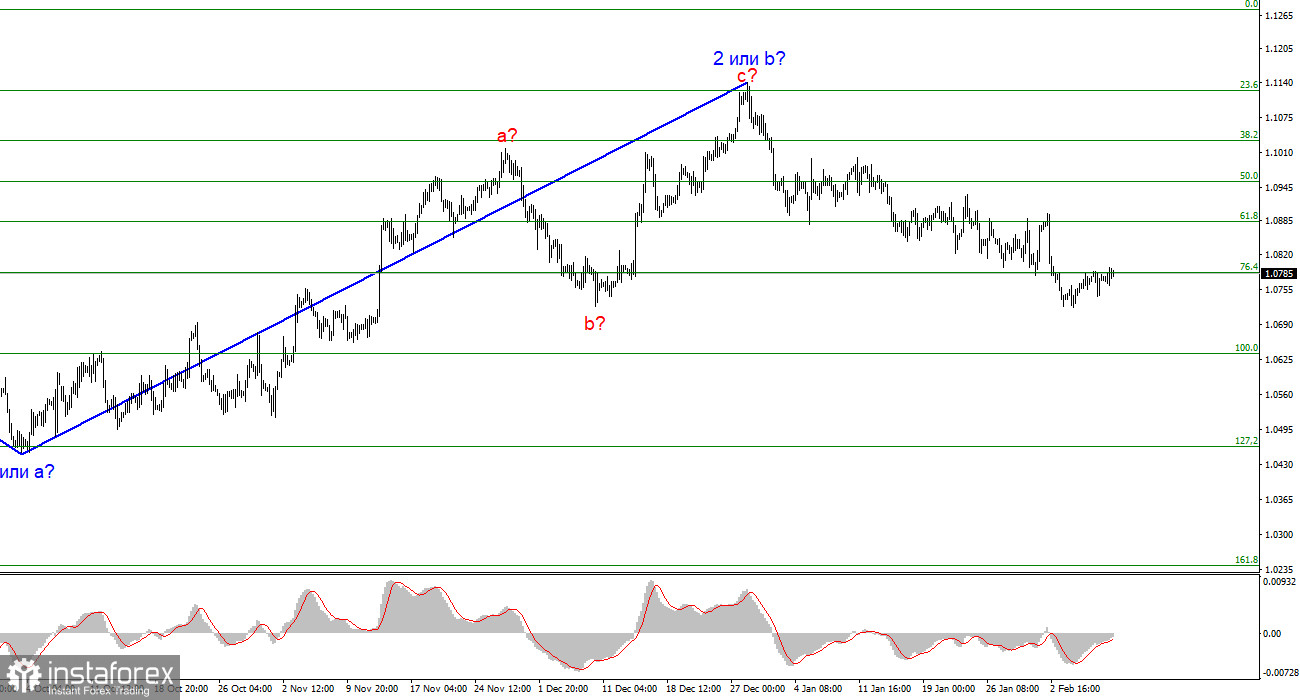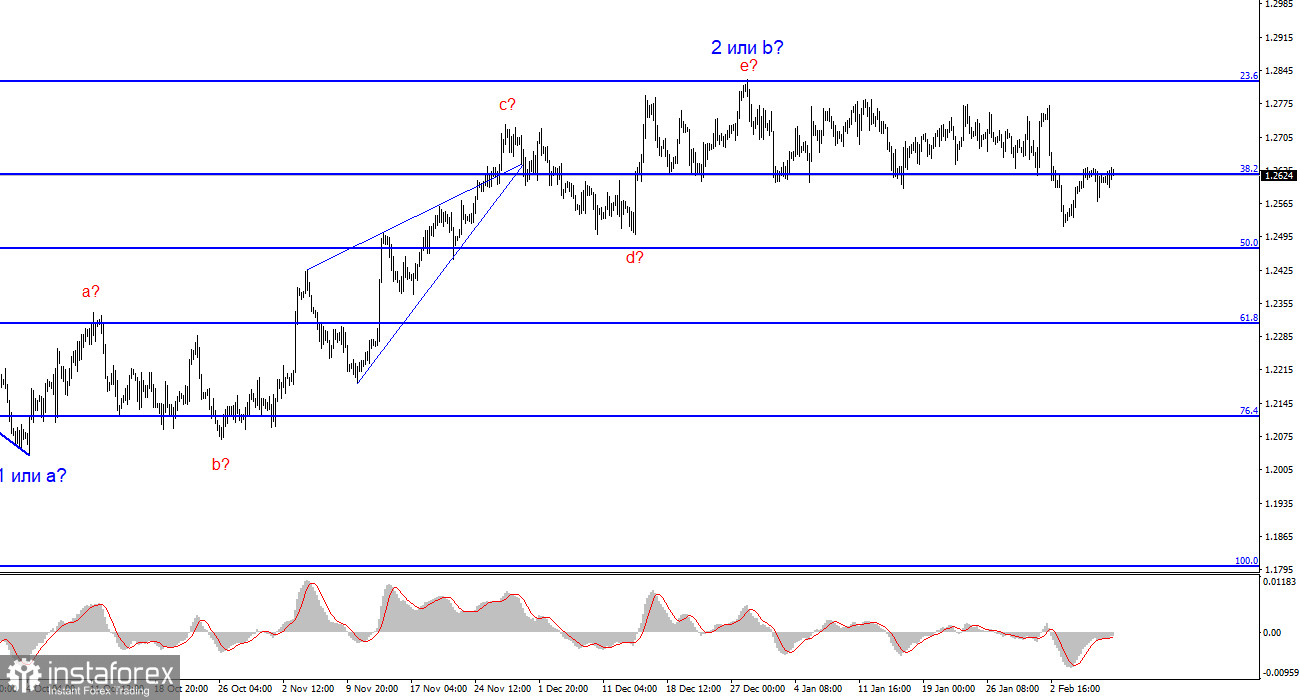
There will be many interesting and potentially significant events in America. The inflation report for January will be released on Tuesday. I remind you that US inflation reports only come with one estimate and are not subsequently revised or adjusted. The Consumer Price Index may slow down to 3% on an annual basis. Core inflation may fall to 3.7-3.8% YoY. Is this slowdown significant? Is it strong enough to slightly soften the hawkish sentiment of the Federal Reserve policymakers?
In my opinion, FOMC members will maintain their tough stance even if core inflation falls by 0.1-0.2%. At least, this report (if forecasts are not exceeded or downplayed) will not push the Fed to switch to monetary easing in the near future. I believe that most people have already dismissed the possibilities of a March rate cut, so inflation can only affect the central bank's decision in May.

If inflation slows down by at least 0.2-0.3% in February, March, and April, then the Fed could make a decision to start lowering interest rates in May. Without this, a rate cut can be expected in June. The stronger inflation falls in January, the less reason there will be for the market to increase demand for the dollar.
In addition, US reports on retail sales, industrial production, jobless claims, building permits, housing starts, and consumer sentiment will be released. These reports are interesting, but are unlikely to have a strong impact on market sentiment. Therefore, I would highlight the reverse pattern: if the market maintains a bearish sentiment, then all the events listed above will either strengthen or weaken it. Otherwise, they will not matter.
I would also note a whole array of speeches by FOMC members: Michelle Bowman, Neel Kashkari, Michael Barr, Raphael Bostic, Christopher Waller, Mary Daly. They will provide comments on the economy and monetary policy, and all of them may not convey anything new and important. Last week, we heard statements from several Fed officials, but if we look at the movements of both instruments, it is clear that the market is not interested in them. Nobody is currently interested in the phrase "everything will depend on economic data."
Based on everything I mentioned above, I believe that only the CPI can influence market sentiment, which remains bearish for the euro and neutral for the pound.
Based on the analysis, I conclude that a bearish wave pattern is being formed. Wave 2 or b appears to be complete, so in the near future, I expect an impulsive descending wave 3 or c to form with a significant decline in the instrument. The failed attempt to break through the 1.1125 level, which corresponds to the 23.6% Fibonacci, suggests that the market is prepared to sell a month ago. I am currently considering selling.

The wave pattern for the GBP/USD pair suggests a decline. At this time, I am considering selling the instrument with targets below the 1.2039 mark because wave 2 or b will eventually end, just like the sideways trend. I would wait for a successful attempt to break through the 1.2627 level as this will serve as a sell signal. In the near future, there could be another signal in the form of an unsuccessful attempt to break this level. If it appears, the pair could firmly fall at least to the level of 1.2468, which would already be a significant achievement for the dollar, as the demand for it remains very low.
 English
English 
 Русский
Русский Bahasa Indonesia
Bahasa Indonesia Bahasa Malay
Bahasa Malay ไทย
ไทย Español
Español Deutsch
Deutsch Български
Български Français
Français Tiếng Việt
Tiếng Việt 中文
中文 বাংলা
বাংলা हिन्दी
हिन्दी Čeština
Čeština Українська
Українська Română
Română

